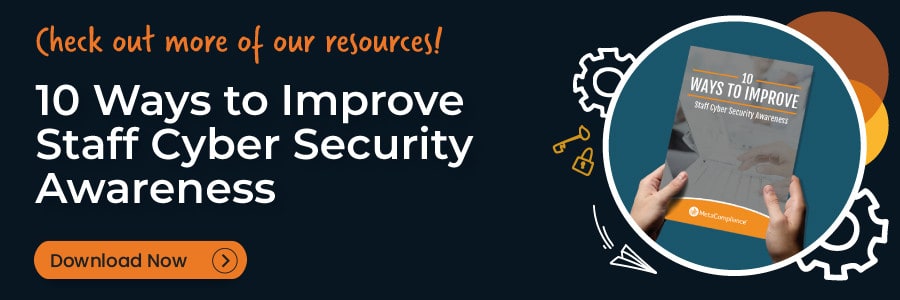Bedste praksis for cybersikkerhed er blevet afgørende, da cyberkriminalitet udgør et betydeligt problem for organisationer over hele verden. Dataovertrædelser dominerer fortsat overskrifterne, og coronavirus-pandemien har understreget det presserende behov for forbedrede sikkerhedsforanstaltninger for at forsvare sig mod nye trusler.
Vigtigheden af cybersikkerhedsbedste praksisser for SMV'er
Små og mellemstore organisationer bliver i stigende grad angrebet og viser sig at være et meget attraktivt mål for cyberkriminelle. Ifølge Global State of Security-rapporten har 66 % af disse organisationer faktisk været udsat for et brud inden for de seneste 12 måneder.
Typisk har disse organisationer ikke det samme store budget eller de samme ressourcer til cybersikkerhed som større organisationer, hvilket gør dem sårbare over for angreb.
I takt med at cybertruslerne bliver mere målrettede, er organisationer nødt til at blive mere proaktive i deres tilgang til cybersikkerhed og investere i de områder af deres virksomhed, der har mest brug for at blive beskyttet.
For at hjælpe dig med at finde ud af, hvilke områder der skal prioriteres, har vi udarbejdet en liste over seks bedste praksis for cybersikkerhed.
6 vigtigste best practices til cyber security
1. Regelmæssig lapning
Patch Management bør være en vigtig del af din cybersikkerhedsstrategi. Der bliver hele tiden opdaget nye sårbarheder, og hvis der ikke kommer patches, vil hackere udnytte disse sårbarheder til at få adgang til dit netværk.
En patch er i bund og grund et stykke kode, der installeres i et eksisterende softwareprogram for at rette et problem eller forbedre et programs generelle stabilitet. Det er vigtigt for at holde maskinerne opdaterede, stabile og sikre mod malware og andre trusler.
Det anslås, at patches kan forhindre op til 85 % af alle cyberangreb, så det er vigtigt, at din organisation anvender disse patches, så snart de bliver tilgængelige. Hvis du ikke gør det, kan det være katastrofalt for din virksomhed.
2. To-faktor-autentificering (2FA)

To-faktor-autentifikation giver et ekstra lag sikkerhed, som kan gøre hele forskellen mellem et forsøg på hacking og et forstyrrende databrud for en virksomhed.
Ud over et brugernavn og en adgangskode kræver to-faktor-autentifikation en anden oplysning for at bekræfte brugerens identitet. Det kan være en pinkode, en kode, et token eller endda biometriske data som f.eks. et fingeraftryk.
Det er en af de enkleste måder at holde følsomme virksomhedsoplysninger private og sikre mod aflytning. Det kan være for at logge ind, nulstille en adgangskode eller for at give en stærkere autentificeringsproces til beskyttelse af følsomme data som f.eks. personligt identificerbare eller finansielle oplysninger.
Med et stigende antal medarbejdere, der nu arbejder eksternt, giver to-faktor-autentifikation dem adgang til virksomhedsdata uden at kompromittere virksomhedens netværk.
3. Sikkerhedsuddannelse af høj kvalitet til medarbejderne
90 % af alle vellykkede cyberangreb er et resultat af oplysninger, som medarbejderne ubevidst har givet. Efterhånden som det bliver sværere at bryde ind i netværk, går hackere i stigende grad efter medarbejdere, da de er den nemmeste måde at infiltrere et netværk på.
Effektiv uddannelse i sikkerhedsbevidsthed er afgørende for at uddanne medarbejderne i at identificere og reagere hensigtsmæssigt på den voksende række af cybersikkerhedstrusler. Alle medarbejdere på alle niveauer i organisationen bør modtage denne uddannelse for at sikre, at de har de færdigheder, der er nødvendige for at identificere et angreb.
Uddannelsen vil ikke kun uddanne personalet i de forskellige trusler, som de står over for internt, men den vil også dække de cybersikkerhedsrisici, som de står over for, når de arbejder eksternt. Fjernarbejde er nu blevet normen, men det kan udgøre en alvorlig sikkerhedsrisiko, som kan gøre din virksomheds it-netværk, systemer og enheder meget sårbare over for angreb. Cyberkriminelle vil drage fordel af enhver mangel på sikkerhed, og den nuværende krise giver dem mange attraktive svage punkter at udnytte.
4. Pålidelig offsite backup-løsning

Angreb på virksomheder er næsten fordoblet i løbet af de sidste fem år, og derfor skal organisationer være i stand til at reagere hurtigt og effektivt på eventuelle sikkerhedshændelser, der måtte opstå.
En af de bedste måder at beskytte din organisation på og sikre, at den er rustet til at håndtere den voksende række af cybersikkerhedstrusler, er at benytte sig af et outsourcet Security Operations Centre (SOC).
Et SOC drives af et dedikeret team af sikkerhedseksperter, der arbejder med at overvåge en organisations sikkerhedsoperationer for at forebygge, opdage og reagere på potentielle trusler. De vil typisk spore sikkerhedstrusler, herunder meddelelser om potentielle trusler via værktøjer, medarbejdere, partnere og eksterne kilder. Sikkerhedsteamet undersøger derefter truslerne, og hvis det anses for at være en sikkerhedshændelse, håndterer de den hurtigt og effektivt.
Hvis du ikke har ressourcerne til et internt sikkerhedsteam, kan et outsourcet SOC give dig den ekspertise, erfaring og teknologi, der kan beskytte din organisation mod den voksende række af cybersikkerhedstrusler.
5. Identificere informationsaktiverne og databehandlingsaktiviteterne
For at udvikle en omfattende cybersikkerhedsstrategi og effektivt identificere risici skal din organisation gennemføre en grundig revision af sine informationsaktiver og databehandlingsaktiviteter.
Dette vil hjælpe dig med at fastslå, hvad dine mest værdifulde informationsaktiver er, hvor de er placeret, og hvem der har adgang. Når disse områder er blevet identificeret, kan du fokusere på, hvordan hvert enkelt informationsaktiv potentielt kan blive kompromitteret. Uanset om der er tale om et systembrud, malware eller endda en insidertrussel, kan der tages skridt til at forbedre disse processer og reducere chancen for, at en cyberkriminel får adgang til kritiske systemer.
Regelmæssige revisioner af databehandlingsaktiviteter vil bidrage til at beskytte data og reducere den organisatoriske risiko.
6. Udarbejd en plan for reaktion på hændelser
Da antallet af cyberangreb og databrud fortsætter med at stige, vil din organisation uundgåeligt opleve en sikkerhedshændelse på et eller andet tidspunkt.
For effektivt at kunne håndtere enhver hændelse, der måtte opstå, er det vigtigt at have en rapporteringsstruktur på plads, der gør det muligt for personalet at identificere og rapportere hændelser i tide. Rapporteringsmuligheden skal omfatte alle de forskellige hændelser, der kan opstå, og fastlægge passende reaktioner. Den understøttende politik, de understøttende processer og planer bør være risikobaserede og dække eventuelle lovmæssige rapporteringskrav.
Etablering af en beredskabsplan for hændelser vil bidrage til at uddanne og informere personalet, forbedre de organisatoriske strukturer, forbedre kundernes og interessenternes tillid og reducere de potentielle finansielle konsekvenser efter en større hændelse.
Læs mere om det: Sådan skriver du en effektiv plan for håndtering af hændelser




